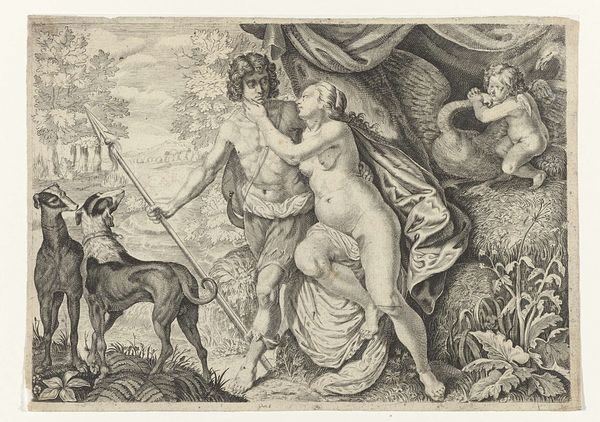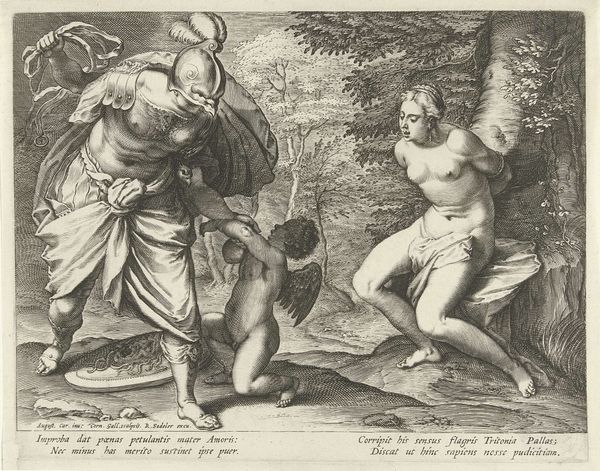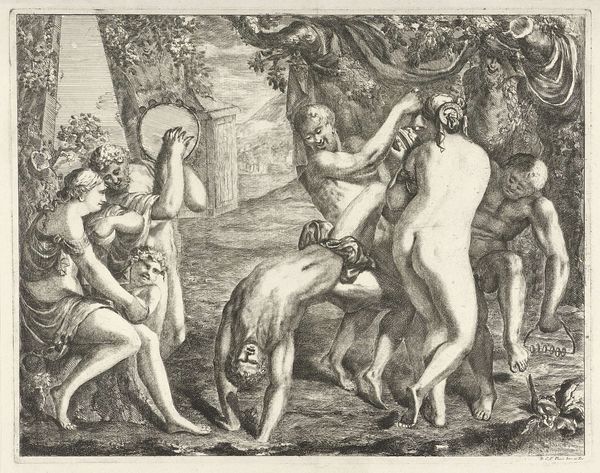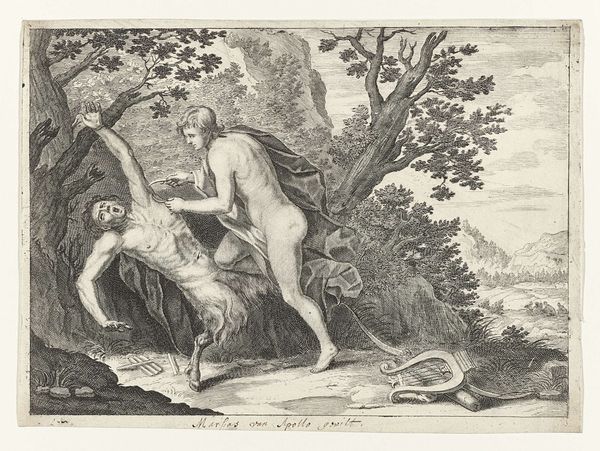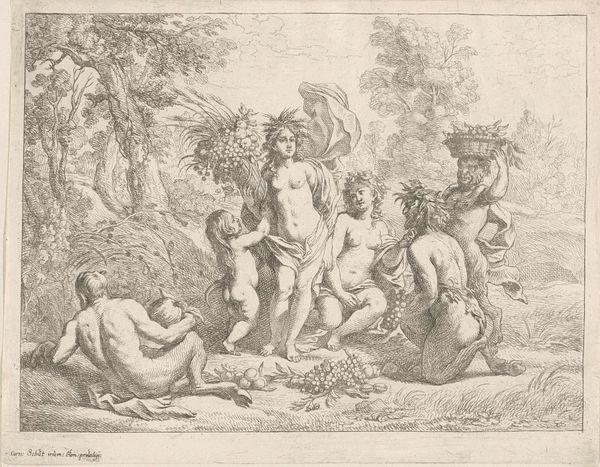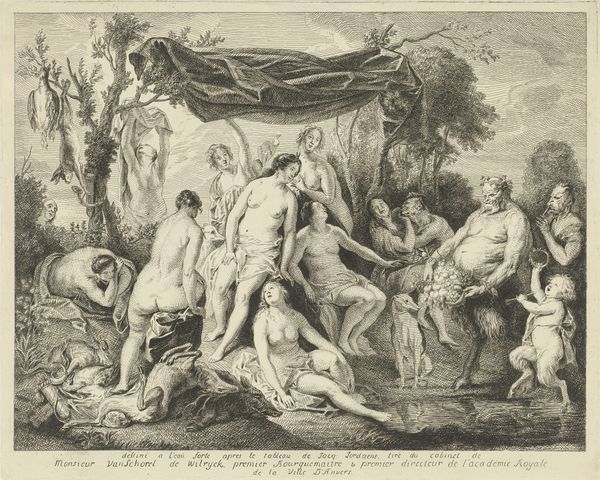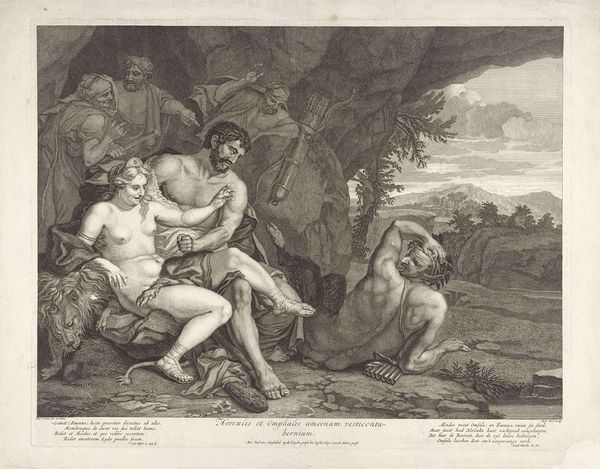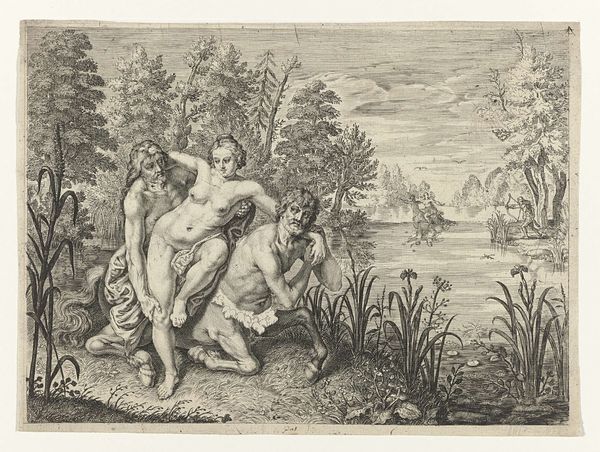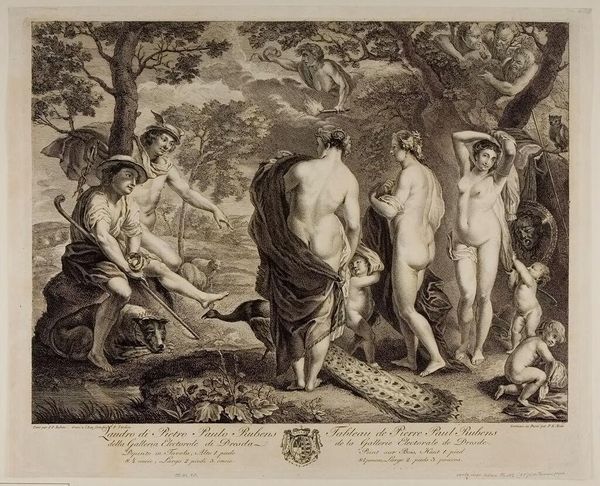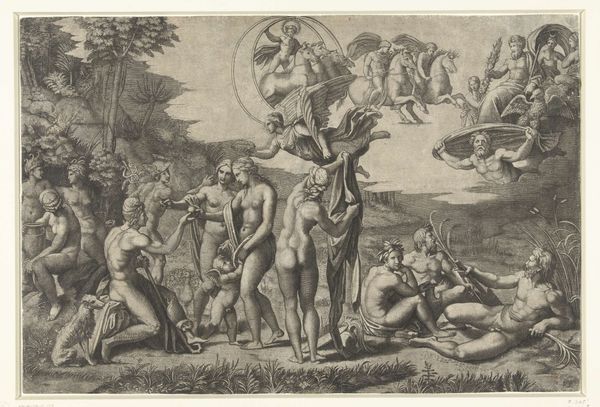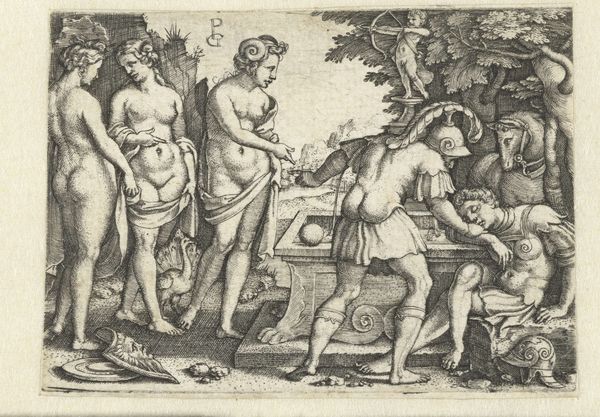
print, engraving
#
allegory
#
narrative-art
#
baroque
# print
#
landscape
#
figuration
#
engraving
#
erotic-art
Dimensions: height 310 mm, width 397 mm
Copyright: Rijks Museum: Open Domain
Curator: Let’s turn our attention to a print entitled "Landschap met bacchanaal, met Bacchus," which roughly translates to "Landscape with Bacchanal, with Bacchus," created sometime between 1667 and 1704 by David van der Plas. Immediately striking is its swirling composition filled with figures. What is your initial reaction? Editor: There is an interesting blend of carefree abandon and artistic control, a kind of choreographed chaos in black and white, a story being told, definitely sensuous and exuberant! The texture feels etched right into the scene. Curator: Indeed. This engraving on paper presents a bacchanaal, a revelrous scene associated with Bacchus, the Roman god of wine, fertility, and theatre. It offers an ideal lens through which we might understand ideas about material consumption and sensuality in that historical context. The reproductive labor in printmaking is crucial too, it made classical subjects available to new, wider audiences, for personal collecting, or educational tools in studios and schools. Editor: The way Bacchus is portrayed, though... his association with wine takes center stage. The abundance of grapes, the tipsy interactions among figures, and the overarching symbolism point toward ritualized liberation and altered consciousness through sensory indulgence. Is this meant as an invitation or a commentary? Curator: Van der Plas’s technical approach warrants recognition; there’s incredible skill in rendering tone and texture. Each line etched and carved is a material record of craft, a testament to hours dedicated in achieving the desired tonal gradation and visual impact. Think of the paper, the ink, and the press. Editor: Agreed. I can see that. Looking closely, I detect underlying themes about cyclical renewal, an interesting choice given this era’s burgeoning sense of empirical observation. Are we perhaps invited to consider not just material excess, but also the transient nature of earthly pleasures? It does look a little hedonistic. Curator: Exactly, this piece encourages conversations that connect material culture with mythological allegory and the changing landscape of early modern intellectual life. Editor: It seems even now we can still engage with ideas surrounding consumption and revelry—in this era, perhaps reconsider the symbols and rituals in our own cultural context. Curator: Agreed, it certainly provokes, still, and rewards contemplation across both time and media.
Comments
No comments
Be the first to comment and join the conversation on the ultimate creative platform.
